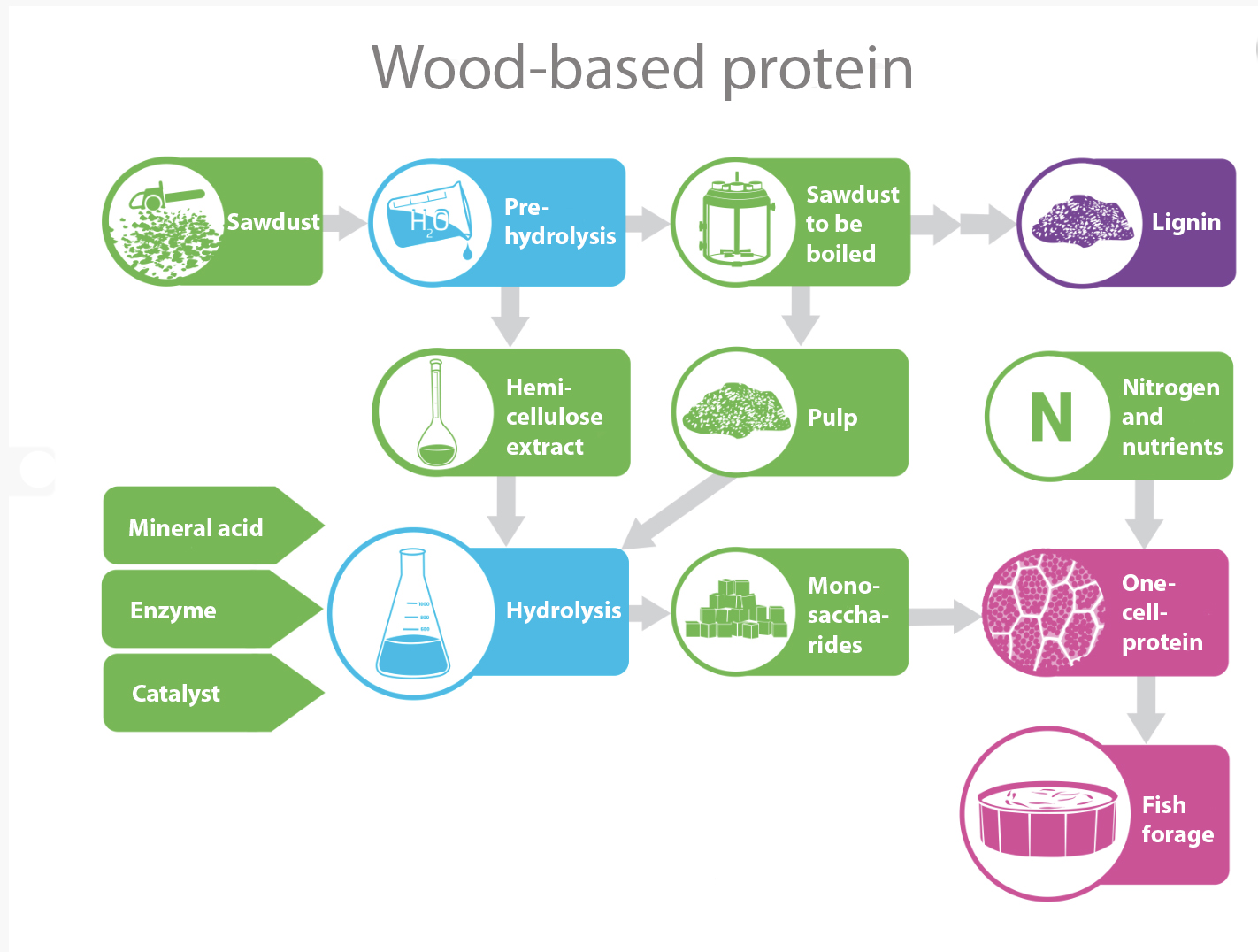

Sawdust could offer one solution to the global need for nutrients, believes Risto Korpinen, research scientist at Natural Resources Institute Finland. Korpinen carries out a research project, where his aim is to develop a manufacturing process for a high-level, single-cell protein from sawdust. Later the protein could be processed to fish forage, for example.
According to Korpinen, the present way in fishfarming to feed the fish with soy and wildfish is problematic. ”Use of wildfish as forage has collapsed the fish stocks of the world,” Korpinen says.
Soy industry is criticised as well, because a lot of forests have been cleared to establish soy plantations. According to Korpinen, a lot of soy-like imported forage is being used in Finland, and the fish industry lacks sustainable, domestic alternatives for fish forage.
A major part of sawdust produced in Finnish sawmills is used in pulp and energy production. The rest is not necessarily used to any purpose. Korpinen thinks this residual sawdust would be an ideal material for fish forage.
According to him, also potato and corn starch could be used in protein manufacturing. However, this does not make much sense, because they can be utilised as food for humans, too.
Making fish forage protein from sawdust could also be one option to increase the profitability of sawmilling.
